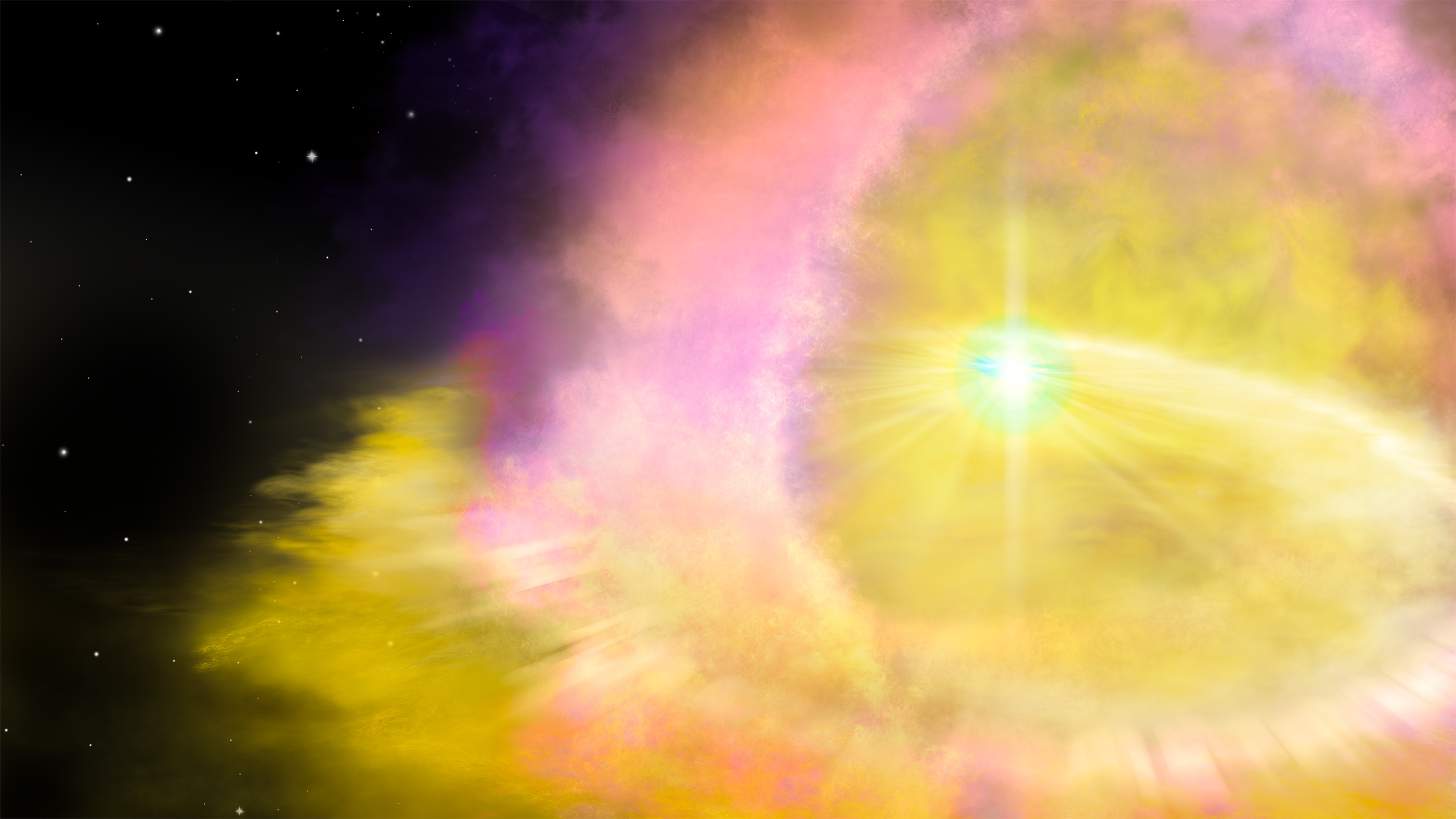
This supernova is one for the record books.
A mammoth star explosion known as SN2016aps, which occurred in a galaxy about 3.6 billion light-years from Earth, is the brightest supernova ever seen, a new study reports.
"We can measure supernovae using two scales: the total energy of the explosion, and the amount of that energy that is emitted as observable light, or radiation," study lead author Matt Nicholl, a lecturer in the School of Physics and Astronomy and the Institute of Gravitational Wave Astronomy at the University of Birmingham in England, said in a statement.
"In a typical supernova, the radiation is less than 1% of the total energy," Nicholl added. "But in SN2016aps, we found the radiation was five times the explosion energy of a normal-sized supernova. This is the most light we have ever seen emitted by a supernova."
Related: Supernova photos: great images of star explosions
SN2016aps is so odd and so extreme that Nicholl and his colleagues think it may be a "pulsational pair-instability" supernova, in which two big stars merge before the whole system goes boom. Such events are hypothesized, but astronomers have never confirmed their existence observationally.
As its name indicates, SN2016aps was discovered in 2016, by the Panoramic Survey Telescope and Rapid Response System in Hawaii. Nicholl and his team tracked the event for two years with NASA's Hubble Space Telescope and a variety of instruments on the ground, watching as the supernova's brightness faded to just 1% of its peak output.
Get the world’s most fascinating discoveries delivered straight to your inbox.
These observations allowed the researchers to characterize the explosion and piece together how it may have happened. For example, the team determined that much of SN2016aps' brightness probably derived from the interaction between the supernova and a surrounding shell of gas. Before they explode, doomed giant stars experience violent pulsations, which eject such shells into space.
"If the supernova gets the timing right, it can catch up to this shell and release a huge amount of energy in the collision," Nicholl said. "We think this is one of the most compelling candidates for this process yet observed, and probably the most massive."
In addition, the researchers calculated that the supernova system harbored between 50 and 100 times the mass of the sun. And it may indeed have been a system, not just a single star.
"The gas we detected was mostly hydrogen — but such a massive star would usually have lost all of its hydrogen via stellar winds long before it started pulsating," Nicholl said. "One explanation is that two slightly less massive stars of around, say 60 solar masses, had merged before the explosion. The lower-mass stars hold onto their hydrogen for longer, while their combined mass is high enough to trigger the pair instability."
The new study, which was published online today (April 13) in the journal Nature Astronomy, heralds future discoveries that may be even more exciting, team members said.
"Finding this extraordinary supernova couldn't have come at a better time," co-author Edo Berger, an astronomy professor at Harvard University, said in the same statement.
"Now that we know such energetic explosions occur in nature, NASA's new James Webb Space Telescope will be able to see similar events so far away that we can look back in time to the deaths of the very first stars in the universe."
The $9.7 billion James Webb, often billed as Hubble's successor, is scheduled to launch next year. The new space telescope will conduct a wide range of observations, from studying the formation of the universe's first stars and galaxies to hunting for signs of life in the atmospheres of nearby alien planets.
- Know your novas: star explosions explained (infographic)
- Star quiz: test your stellar smarts
- The mystery behind a superbright supernova may just have been solved
Mike Wall is the author of "Out There" (Grand Central Publishing, 2018; illustrated by Karl Tate), a book about the search for alien life. Follow him on Twitter @michaeldwall. Follow us on Twitter @Spacedotcom or Facebook.
OFFER: Save 45% on 'All About Space' 'How it Works' and 'All About History'!
For a limited time, you can take out a digital subscription to any of our best-selling science magazines for just $2.38 per month, or 45% off the standard price for the first three months.

 Live Science Plus
Live Science Plus







